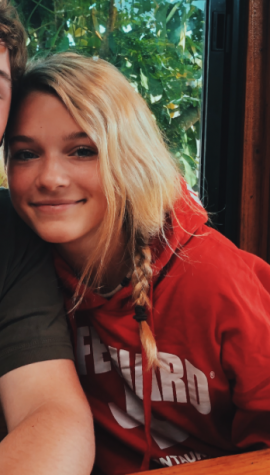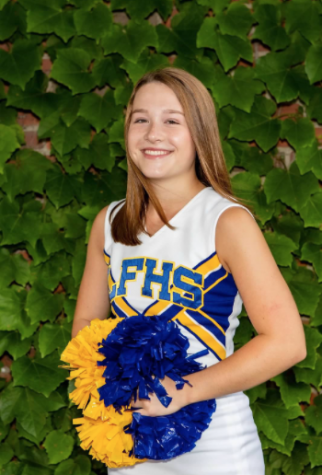Spotlight Scouts Recover From Injuries: A Profile On Five Student-Athletes
November 27, 2019
In sports, injuries are mostly unavoidable, and the recovery process for an injury can take from weeks to months. Being a Varsity athlete already enforces hard work, but the process of returning to the field is even harder. For these Scouts, however, undergoing such notable transitions grew their characters and levels of perseverance like never before.
Blythe Karras

Junior Blythe Karras had been on the Varsity Lacrosse team since her freshman year, but as a sophomore, she, unfortunately, got an injury that took her out for most of the season. In the first game of the season, she was hit by a girl running down the field.
She ended up with an avulsion fracture, which is when a fragment of bone tears away from the main mass of bone in her left foot.
“My biggest fear in that moment is that I wouldn’t be able to play for the rest of the season,” she said. “All year I had been looking forward to playing but in a second it was all washed away.”
Karras tried to stay as active with the team as she could while she had to sit out.
“I cheered my teammates on, which I think is very important and helped people out. I also helped my coach with stats. But, watching is also really hard seeing your team play without you,” said Karras.
When told she would be out for 6 weeks, she was eager to get back on the field. When finally cleared to get back to lacrosse she was mentally ready to get back in the game, but her foot had other plans.
“I was excited but my foot wasn’t ready. I was pushing to play even though I wasn’t healed. My doctor told me that if I had no pain I could play so I said I didn’t. I was frustrated that couldn’t live up to my full potential and give 100% when I wanted to.”
Karras encourages other athletes to not take their playing time for granted.
“Appreciate every second you have on the field and don’t take your time for granted!” she said. “Always play 100%. I know that when I want a break I look back onto when I actually wasn’t able to play and get my head back in the game. I tell myself to give everything I have on the field.”
Stephen Bradley
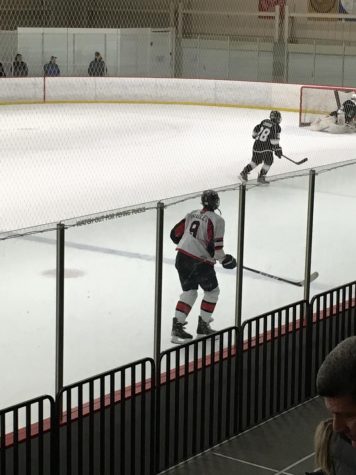
From skating the puck across the ice every day to a complete change in his daily routine, senior Stephen Bradley has faced a torn labrum and having to recover from two surgeries.
When asked about how the injury immediately affected his everyday life, Bradley seemed uneasy.
“It just felt different, like I had lost something,” he said. “It was hard to do everyday tasks like I couldn’t dress myself, take a shower, or even go to fill up my water bottle without someone’s help. It was very degrading.”
The thought of never being able to play again is a common fear of injured athletes, but for Stephen, that fear vanished when he found out he would be back on the ice in nine to twelve months. In the meantime, he found himself supporting the rest of his team by going to games, staying in contact with the coaches, and motivating his teammates, no matter how much he wanted to play himself.
“It’s a challenge all around, but you just have to stay positive and know that it’ll get better,” said Bradley.
Lucy Surkamer
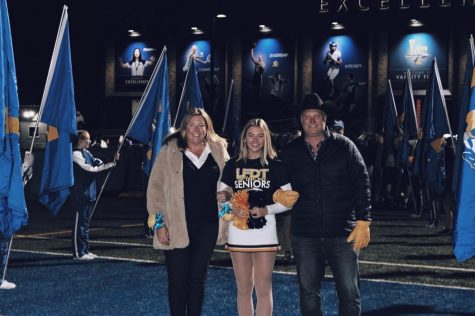
Senior Lucy Surkamer thought she may lose her chance of being on the dance team after tearing her Labrum in the middle of her sophomore year. The injury immediately took over her life. With little to no movement or flexibility, she had no option but to settle for surgery.
She had no idea when she would be able to dance again, with her doctor only informing her on when she could run again. “They didn’t tell me when I would be able to dance again, running is one thing, but dancing is another story.”
Fear crept in for the incoming junior, with poms tryouts months away, she didn’t know if she would have enough time to recover, and if she could participate on the team on she didn’t. “I was so worried about the injury about whether or not I could get back into dance on time.”
Luckily for Surkamer, she was able to make the team while recovering with her injury. She said it was difficult to not be dancing with the team, but still went to every practice and spent time with her teammates as much as she could. “I hung out with my team a ton! I went to every practice and it was so nice to watch my team grow.”
After months of being out of dance, Surkamer was cleared to start dancing, but still had a long way to go. One of the hardest parts of recovery for athletes is knowing when to stop, when to acknowledge your pain and give yourself and your injury some rest.
“One of the hardest parts was stopping when I needed to,” she said. “All I wanted to do was to get back to where I was before I got hurt.”
Surkamer says the biggest take away from this injury is to not take dancing for granted.
“Persevere through the tough times. It’s hard at the moment, but as soon as you’re out, you’ll wish you were out there.”
Rylie Mills
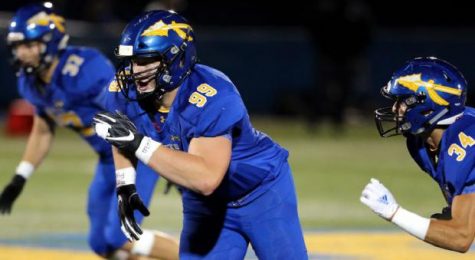
Senior football player and Notre Dame commit Rylie Mills experienced a minor yet abominable injury, causing him to stand on the sidelines when his team needed him. But his biggest injury occurred just this past season when he suffered a sprained ankle in the Scouts’ second game against Wheaton North.
Mills’ injury led to multiple physical therapy sessions where he received let-down news: the injury would prevent him from stepping foot on the field for four to six weeks. During that time, however, he found himself at every practice, talking to his teammates while they adjusted to their temporarily lost defensive end.
After the time slowly passed, Mills’ ankle began to recover and his ability to play the way he used to revitalized. His eagerness to be next to his team on the field needed some holding back, though:
“Being confident in my ankle was an adjustment,” he said.
Though the star football player’s injured ankle shocked students into anxiousness about the future of the team, Mills, and friends are relieved that the injury wasn’t more serious than it was.
“You have to put in a lot of work to get completely healthy, and health is first,” said Mills.
Bridget Mitchell
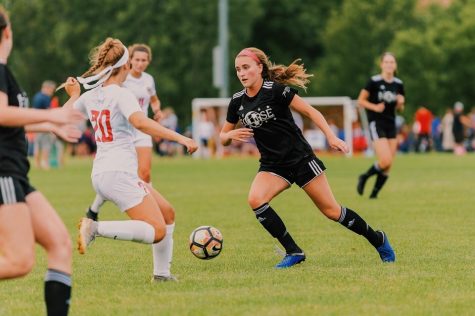
Senior Bridget Mitchell is one of a few athletes to get the same injury twice: A torn ACL and meniscus in the same exact knee. This is the second time in Mitchell’s life that she has gone through this rehab. The moment she was hurt she knew the struggles involved in the months to come.
“You think that if it happens once, it’ll never happen again,” she said. “I felt super defeated because I knew I had to go through this long process again.”
Not only did this injury affect her ability to play, but it also affected her day-to-day life. She was forced to completely change her plans for the next 6-8 months. Mitchell had to return concert tickets, return flights, and tell her college coaches, all to accommodate for her surgery which would leave her unable to walk for weeks.
Many fears ran through Mitchell’s mind when informed of her injury. Being injured meant possibly being out of high school season, missing her most important club games, and potentially not being able to play at Nationals in June.
“I was scared I wasn’t going to be able to play soccer with my friends after looking forward to it for all of high school.”
Just as she did in her freshman year, Mitchell is the team manager to stay involved while off the field. As of right now, she may be able to play late May/early June but that’s tentative on how her recovery process follows through. From this experience Mitchell has learned to be patient and how to overcome the challenges thrown in her path.
“Patience is a virtue and we are only given struggles in life that we can overcome,” she said.


